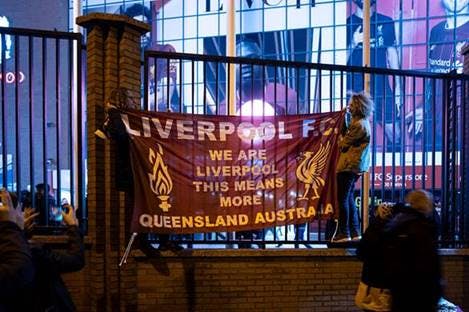Looked at from a commercial perspective the great paradox of modern football is that although even the leading clubs are relatively small as businesses, they project an image which, in certain cases, matches those of the world’s leading brands.
It is not far-fetched to say that as brands, Real Madrid, Barcelona and Manchester United bear comparison with the likes of Toyota, Pepsi or Chanel, and in terms of advocacy and loyalty far exceed almost every major brand amongst their increasingly global fanbases.
It is surprising that few clubs have embraced this advantage and still fewer have sought to identify, articulate and organise around their brand identity. That Liverpool should have been amongst the first to take this step and that it should coincide with their elevation to Champions of England, Europe and The World is worth examining. This is the story of “This means More”.
It began as a brief to find a better way for Liverpool to attract commercial partners at a time when the team was struggling, and sales were confined either to long-term and loyal partners or those seeking a piggyback on the club’s historic success and the Premier League’s global media platforms.
Octagon had been developing a position for some time that football rights had become commoditised and the way forward was to focus on intellectual property and those things which truly differentiated a club from its competition. What was it that actually made Liverpool football club different from Bayern Munich, Chelsea or even Blackpool?
Moreover, what element could be identified that even a Manchester United fan would have to acknowledge was truly different about Liverpool? In short, a positioning built upon an irrefutable insight and truth.
We had heard that when Liverpool signed a player the manager liked to tell the newcomer that the shirt was “heavier” than other shirts. This seemed to be a pathway to a deeper insight about the club generally, namely that everything at the club appeared to have an elevated purpose and meaning.

Fans starved of glory, whether in Merseyside or Asia, still supported the club because it represented something more than just success and sport. It was a belief that achievements are more valuable if they have to be struggled for and hard-earned. This seemed to resonate with Liverpool both as a club and as a city. The club is a symbol of hope in dark times and a reason to celebrate in the good times.
The articulation of these insights became “This Means More” and, whilst it was created as an organising idea for commercial sales, it rapidly gained a currency within the club’s wider marketing and communications strategy.
It provides an easily understood and differentiated positioning for the club which is not only appreciated by commercial partners but is recognised and celebrated by the ultimate arbiters, the fans themselves. The biggest compliment we received was when the Kop used the phrase on one of its banners. This acknowledgement was better than a Cannes Lion – and more authentic.
It’s worth saying that there have been critics, mostly journalists that have let slip that they are Manchester United fans. We particularly enjoyed the GQ writer who said that it was “marketing bollocks” written by people that wouldn’t know Tommy Smith if he head-butted us.
The fact is that we rejected numerous ideas precisely because they could not bear scrutiny by the world’s most sceptical consumer base, football fans. The odour of sour grapes does seem to emanate from most of these pieces. Ultimately the lesson learned is that the elite clubs are Super Brands in waiting. They all have a unique and differentiated story and need only to articulate it. This will be the next significant phase in the development of the sports commercial story.